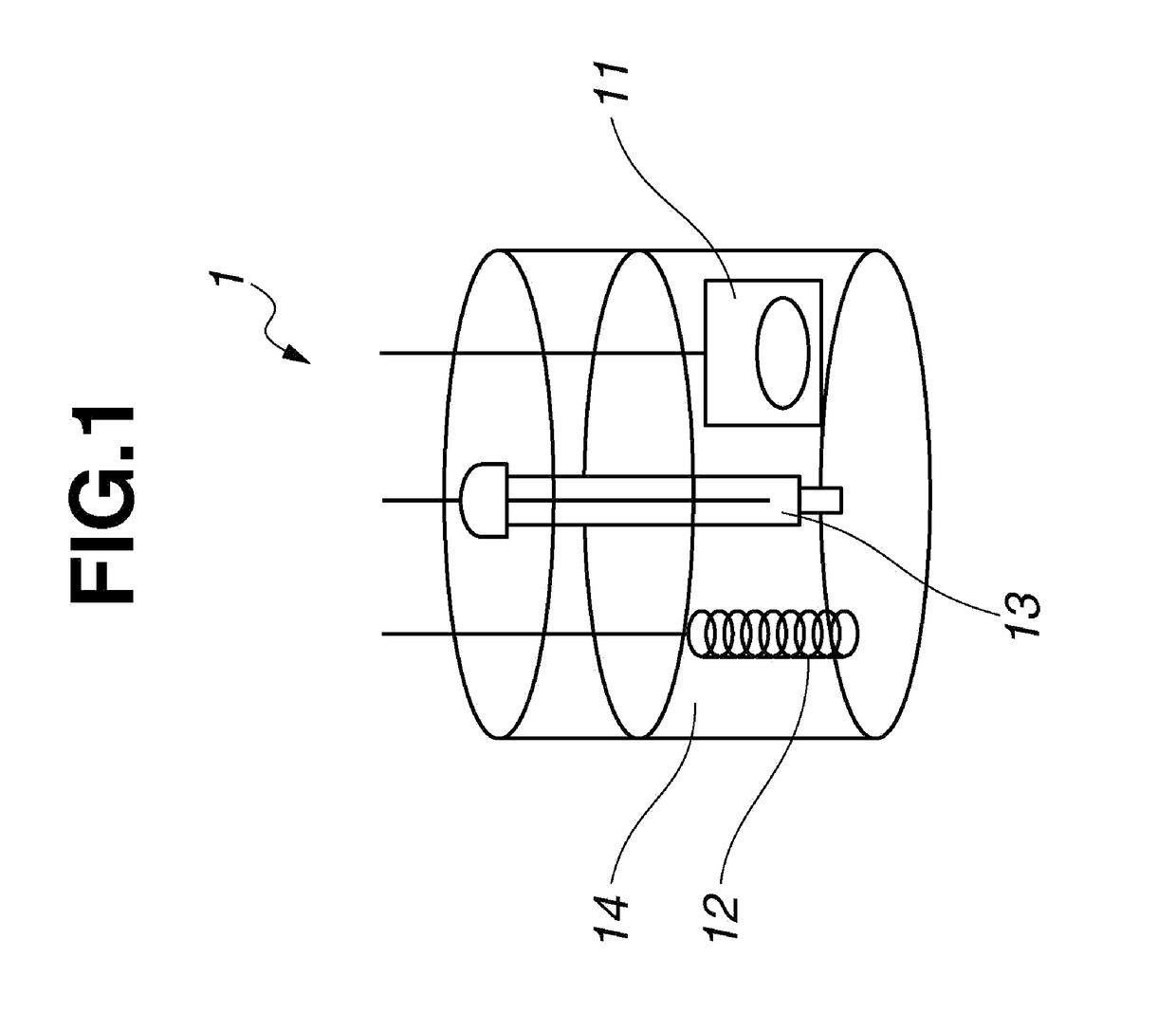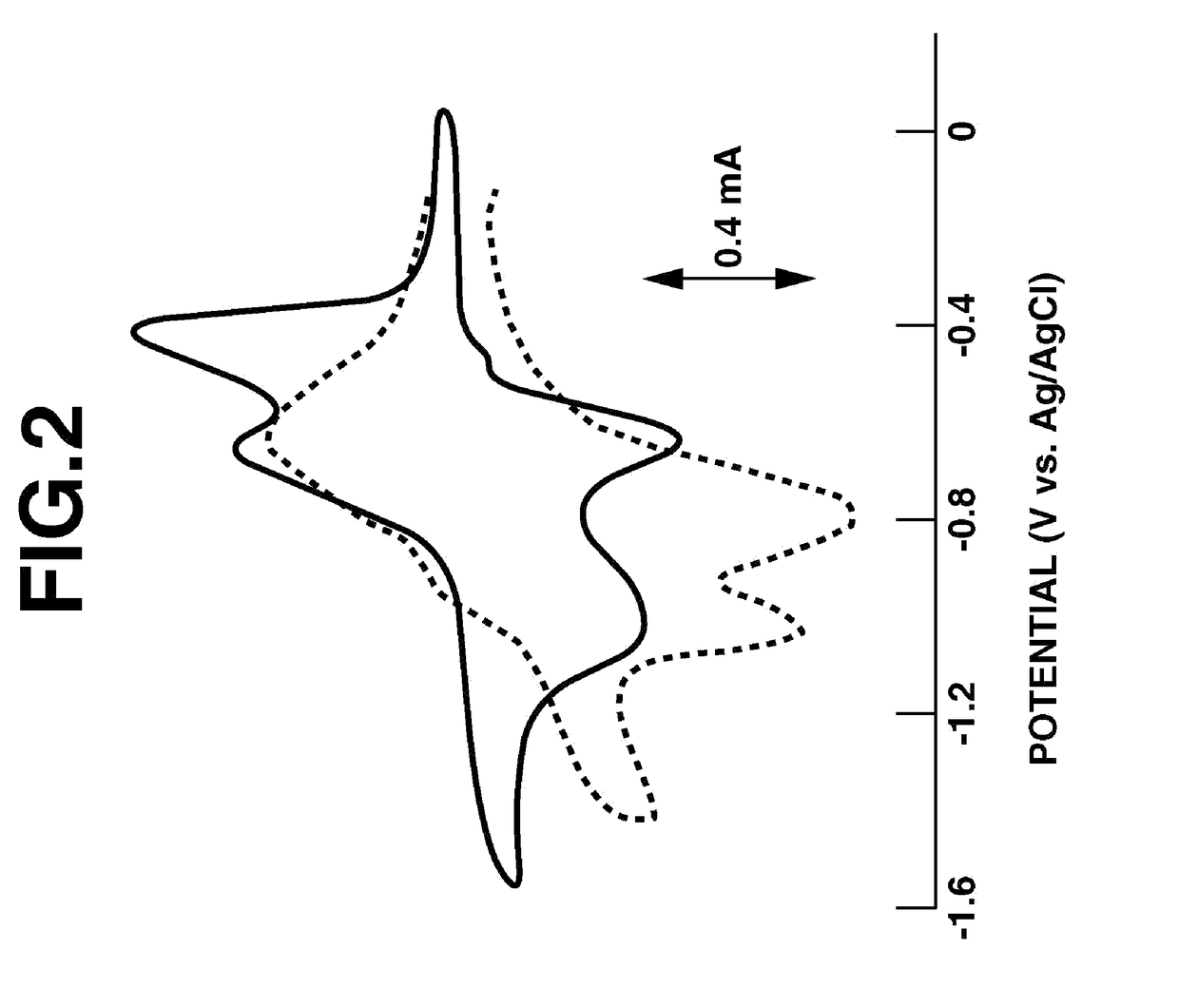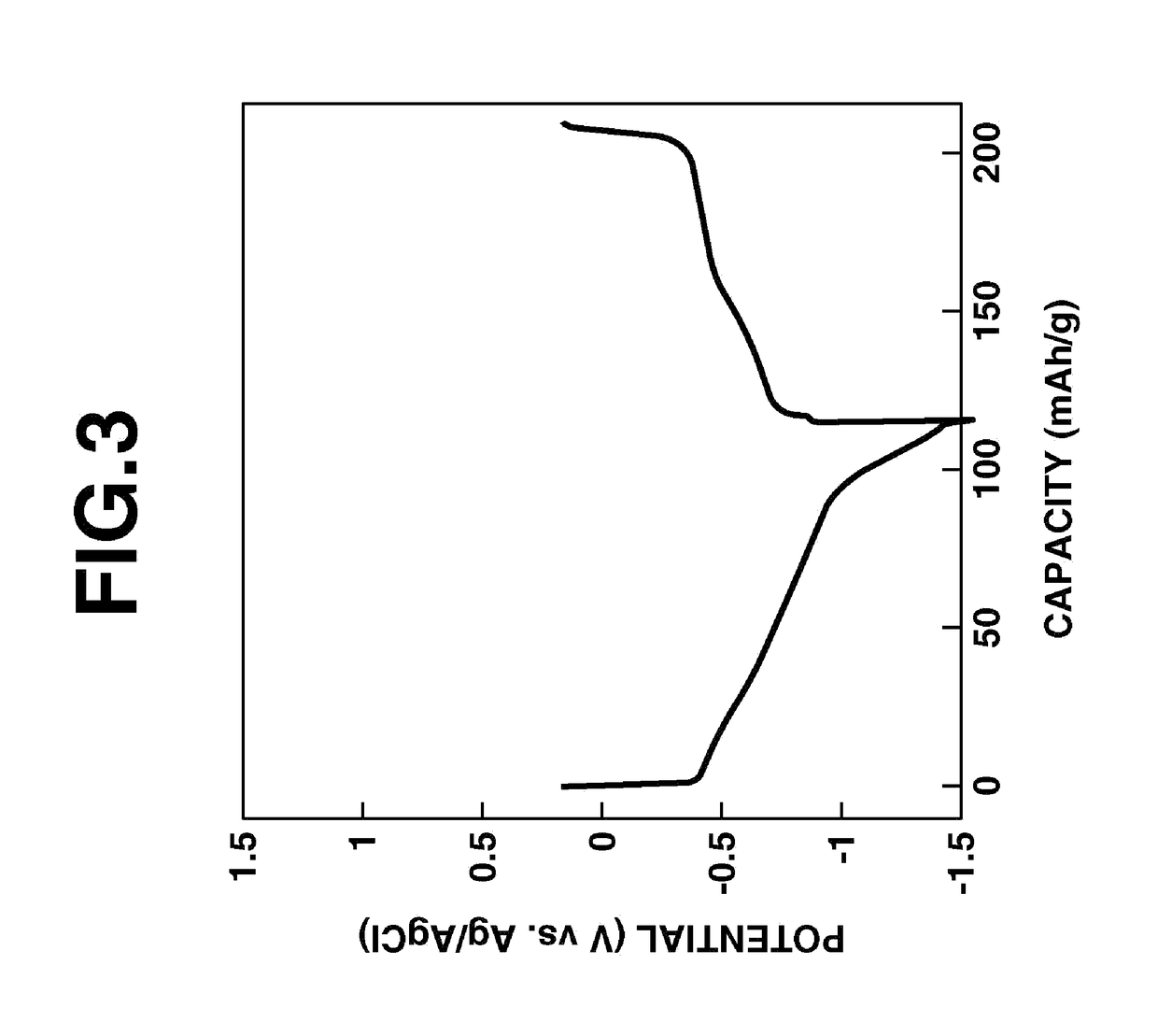Ion-conductive fused-ring quinone polymer, electrode active material and secondary battery
- Summary
- Abstract
- Description
- Claims
- Application Information
AI Technical Summary
Benefits of technology
Problems solved by technology
Method used
Image
Examples
example 1
Synthesis of Ion-Conductive Fused-Ring Quinone Polymer A
[0145]Ion-Conductive Fused-Ring Quinone Polymer A was synthesized by the following scheme.
[0146]The following were added to a 200 mL round-bottomed flask and then heated at 80° C. under stirring in a nitrogen atmosphere: 1 g (10.8 mmol) of polyepichlorohydrin (from Sigma-Aldrich; weight-average molecular weight, 700,000; prior to use, this was purified by precipitation in benzene-methanol solvent and vacuum-dried), 2.66 g (12 mmol) of 2-hydroxyanthraquinone, and 54 mL of N-methylpyrrolidone. After dissolution was confirmed, 1.8 g (12 mmol) of diazabicycloundecene was added and reacted at 80° C. for one week. Following reaction completion, the reaction product was purified by precipitation in methanol, giving Ion-Conductive Fused-Ring Quinone Polymer A as a purple solid. Upon comparing the area ratios for the main chain peaks and the aromatic ring peaks obtained by NMR measurement, the amount of anthraquinone moieties introduced...
example 2
Synthesis of Ion-Conductive Fused-Ring Quinone Polymer B
[0150]Ion-Conductive Fused-Ring Quinone Polymer B was synthesized by the following scheme.
[0151]The following were dissolved in 51.5 mL of toluene within a 200 mL round-bottomed flask: 2.5 g (10.3 mmol) of 2-chloroanthraquinone, 4.9 g (15.5 mmol) of vinyltributyltin and 357 mg (0.31 mmol) of Pd(PPh3)4. The resulting solution was reacted 14 hours at 100° C., following which the reaction product was purified by liquid-liquid extraction and column chromatography, giving 1.8 g of 2-vinylanthraquinone.
[0152]Next, 500 mg (2.13 mmol) of the resulting 2-vinylanthraquinone, 551 mg (3.20 mmol) of m-chlorobenzoic acid, 20 mL of 1,2-dibromoethane and 20 mL of tridecafluorohexane were dissolved in 20 mL of dichloromethane. The resulting solution was reacted 48 hours at room temperature, following which the reaction product was purified by liquid-liquid extraction and column chromatography, giving 331 mg of 2-epoxyanthraquinone.
[0153]Next, 2...
examples 3 and 4
Cyclic Voltammetry of Thin-Film Electrodes Produced Using Ion-Conductive Fused-Ring Quinone Polymer a
[0154]Cyclic voltammetry was carried out using the beaker cell shown in FIG. 1.
[0155]First, 80 mg of carbon powder and 10 mg of polyvinylidene fluoride powder dissolved in 1 g of NMP were added to 10 mg of Ion-Conductive Fused-Ring Quinone Polymer A synthesized in Example 1, and these ingredients were kneaded by a ball mill. The mixture obtained by about 15 minutes of mixing was coated onto a glassy carbon substrate, then vacuum-dried under heating at room temperature (20° C.) for 12 hours, giving a thin-film electrode 11.
[0156]The resulting electrode was then immersed in an electrolyte solution, thereby impregnating the electrolyte solution into voids in the electrode. A 0.1 mol / L solution of lithium perchlorate (Example 3) or tetrabutylammonium perchlorate (Example 4) in acetonitrile was used as the electrolyte solution.
[0157]A beaker cell 1 like that shown in FIG. 1 was created by...
PUM
| Property | Measurement | Unit |
|---|---|---|
| Fraction | aaaaa | aaaaa |
| Fraction | aaaaa | aaaaa |
| Fraction | aaaaa | aaaaa |
Abstract
Description
Claims
Application Information
 Login to View More
Login to View More - R&D
- Intellectual Property
- Life Sciences
- Materials
- Tech Scout
- Unparalleled Data Quality
- Higher Quality Content
- 60% Fewer Hallucinations
Browse by: Latest US Patents, China's latest patents, Technical Efficacy Thesaurus, Application Domain, Technology Topic, Popular Technical Reports.
© 2025 PatSnap. All rights reserved.Legal|Privacy policy|Modern Slavery Act Transparency Statement|Sitemap|About US| Contact US: help@patsnap.com



